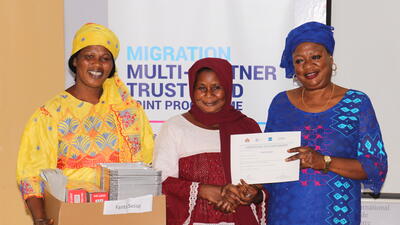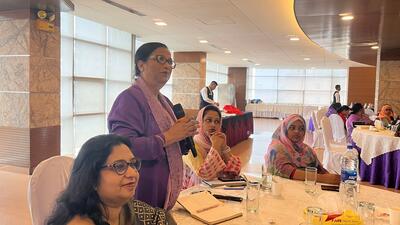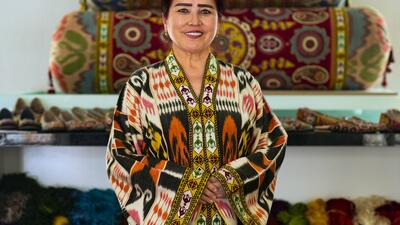
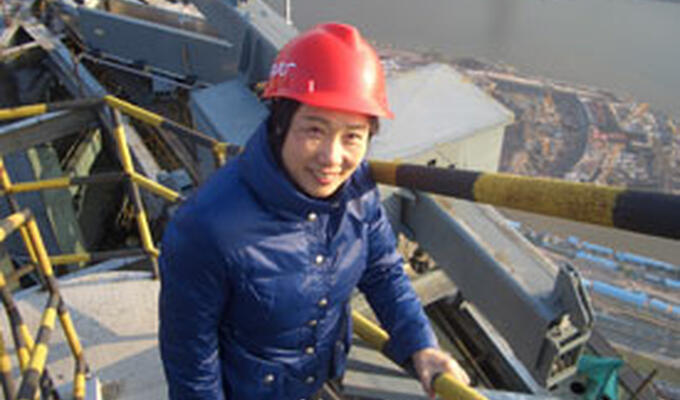
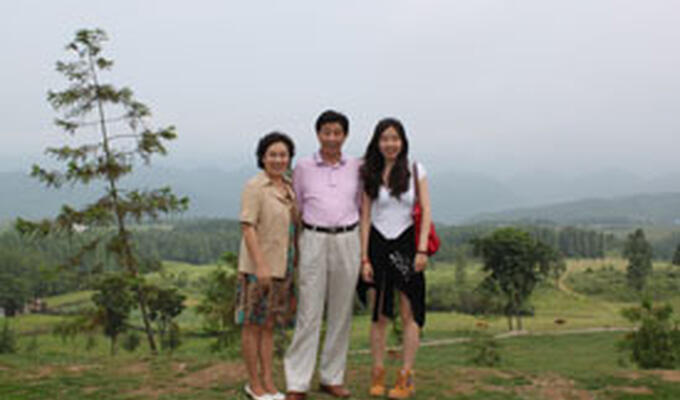

Women in construction: Building employment opportunities
During the Chinese New Year of 2007, I received a long distance call from the United Kingdom. The president of the Chartered Institute of Building (CIOB), Professor Roger Flanagan, was on the telephone and told me the board of the Institute had nominated me as president for 2009/2010. I was surprised, not least because I would be the first woman and non-UK resident to be president in the Institute’s 175-year history. I was also delighted: my appointment reflected change in the construction industry and proved that there are opportunities for all to rise to the top wherever they are located and whatever their background.
The construction industry is interesting: it is sensitive to changing economies and urbanization, yet conversely it can change economies, related sectors and employment. The global financial crisis has constrained the industry, but it has also created opportunities on a global scale where local needs call for construction. The built environment is huge in both developed and developing countries and, in the foreseeable future, it will continue to grow, opening up jobs for construction professionals and promoting more industry leaders.
Traditionally, the construction sector has been male dominated, but it is changing to include more women and support their rise to the top of the industry. CIOB is a change leader and encourages women to join the industry and the Institute. During the period from 1997 to 2011, the number of female members grew from 776 to 2,345, while the percentage of women making up the total membership rose from 2.4% to 5.5%.
It has always been my great desire to promote the role of women in construction and encourage more women to join the CIOB. During my presidency, we achieved seven ‘firsts’:
- Women membership reached an all-time high at 2,761 members;
- The highest annual growth in women membership reached 21%;
- The highest percentage of women members reached 6.0% of the total;
- The largest annual percentage change in women members was from 5.1 % in 2009 to 6.0% in 2010;
- The highest annual growth in new women members was 576;
- Mainland China recorded the highest number of female members outside the United Kingdom.
My contribution to promoting women in construction did not go unrecognized. I received a number of awards, including the Women in Construction Lifetime Achievement Award (2010), and an award in China as an Outstanding Woman — National March-Eighth Red-Banner Pacesetter (2010). In July 2009, Construction News, the premier construction weekly newspaper, published a list of the top 50 people most likely to influence the built environment in the future years of the United Kingdom construction industry. I came in at number 37 along with only two other people from outside the United Kingdom, one of whom was the president of the European Commission.
My progress shows that women can make a difference, as long as we make a commitment to do so. Gender inequality in China is less marked than in some other parts of the world, but wherever women work their personal development is little different from that of men. They work hard and with determination, and are not usually subject to special treatment or support.
My early years were similar to those of many people who were born in China around the time of the Cultural Revolution. I was born in the town of Ya’an in Sichuan province. My mother was a primary school teacher and my father a civil engineer who later encouraged me to join the construction industry. In 1976, I completed my schooling. The Cultural Revolution had not ended and the ‘Down to the Countryside’ movement was still sending China’s educated urban youth to labour on farms. I was sent to work on a wheat farm.
In 1977, a new government policy offered equal opportunities to enter higher education. I enrolled in the civil engineering programme at Chongqing Jianzhu University, a university offering only construction-related courses. I graduated with a BSc in 1982 and was selected to be a teacher in the civil engineering department at the university. During my teaching experience from 1982 to 2003, I also received an MSc in China and a PhD in the United Kingdom, before becoming a professor. After that, I worked in government, first as Vice Mayor of Shapingba District in Chongqing, and later as Deputy Director-General of Chongqing’s Foreign Trade and Economic Relations Commission.
These different experiences are important to my life, but I am not unique. The women of Chongqing are very capable and also have the features of being direct, resolute and intelligent, according to a report published by Chongqing Women Federation in 2009, An investigation on features of Chongqing women. Chongqing women have strong personalities, they are hard working, open minded and do not fear difficulties and risks, and they are eager to climb to the top of their industries. In Chongqing, the world’s largest city with a population of 32 million, more than 30% of business leaders are women compared to an average 20% across China.
The strategy of the Chongqing Government is to encourage more women to play key roles in society. To achieve this, the Government set up the Ten Year Development Plan for Women and Children. A 2001-2010 plan was published in 2001 and a 2011-2020 plan is now active. The implementation of the plan is monitored from time to time. A 2009 review shows great achievements among women.
By the end of 2010, at the close of the first Ten Year Development Plan for Women and Children, there were 318 women leaders at department and district levels in Chongqing Government, 2.7-times the number in 2000.About 3.96 million women were working as government officers at the end of 2010, up from 2.7 million in 2000.
Chongqing is leading China’s growth in female employment, not only in government, but in many sectors including those perceived to be the preserve of male workers, such as property development and construction. In 2010, to celebrate International Women’s Day, the Chongqing Government gave 22 female business leaders awards for their success in business. Among them, more than 30% were from the property development or construction industries, a proportion that will grow as more women enter the workforce and climb to the top of the proverbial ladder.
As the world watches this transformation, it is good to keep in mind the words of Henry Ford, founder of the Ford Motor Company in 1903: Coming together is a beginning. Keeping together is progress. Working together is success.
All photos copyright with Li Shirong.








